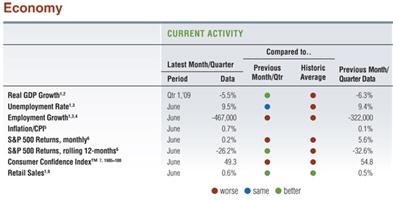Operations focus – are your property taxes to high?
With the changing economy, many owners are focusing their efforts on reducing operational expenses. One often overlooked item on the expense list is property taxes. The right of the local county to tax your property is embedded in New Mexico’s constitution which also spells out the valuation process and how your property tax bill is calculated. Understanding these state statutes allows an owner, or their tax protest agent, to minimize the property’s potential tax value and thus its value.
Understanding property tax value vs. market value
According to the state statutes, your property tax value is based on its “market” value from two years prior to the current tax year and they should revalue every property in the county every two years. In many counties it is common to find a small staff that is required to value hundreds of thousands of different parcels and property’s – an herculean task if approached individually. Lacking the staff to delve into the specific detail about your property, the assessor’s are allowed to do “bulk appraisals” of all similar property’s. For example, if a mini-storage property sold down the way for $5,000 a unit, and the assessor had knowledge of that sale, they might apply that value to all mini-storages in their county. This bulk appraisal methodology gives the assessor a wide scope of power to impact your property tax value and its eventually property tax bill.
The checks and balances in the system
To balance the assessor’s power, the state constitution provides two different mechanisms to the tax payer. Both of these mechanisms involve filing a protest of value. The primary protest mechanism is to file a protest of value within 30 days of receiving a notice of value. Typically, notices of value are mailed out no later than April 1st, of every year. The property tax owner can file a protest by mailing a letter, but most assessors prefer that the protest be filed by using their forms, which can be found online or at the county offices.
The protest process
Once a protest has been filed, it is incumbent upon the owner, or their tax protesting agent, to prove their new value is more accurate than the assessor’s value. Typically that process is done by completing a report that demonstrates the value of the property using income approach, comparable sales, and replication costs. Savvy owners and agents will have a plethora of other valuation methodologies and market information that they can include in their report. Sympathetic assessor’s will take this information into account and negotiate with the owner/agent to a new value. Hardnosed assessor’s will dial up the “pressure” on the owner using legal maneuvers such as filing subpoenas and interrogatories, as well as taking depositions from the owner, their managers and staff. In the event that a value cannot be agreed upon, the owner/agent will be called before a formal hearing board that will rule in favor of the assessor’s value or the owner’s value.
Key dates
The following is a rough timeline of the dates that must be tracked by the owner/agent as it relates to the property tax protest process:
|
Date
|
Event
|
|
Ideally before 4/1
|
Consultant and Owner sign contract for representation of owner during the property tax protest process
|
|
No later than 4/1
|
Assessor’s sends out notice of value
|
|
30 days of contract signing
|
Owner provides information to consultant on property for Consultant’s analysis
|
|
Usually no later than 4/30
|
Consultant files tax protest, provides copy owner
|
|
Usually no later than 6/30
|
Consultant compiles report on property and delivers to Assessor’s office
|
|
Usually no later than 8/30
|
Consultant and Appraisers in Assessor’s office meet and share information on property. Negotiations ad possible resolution of value often occur.
|
|
Usually no later than 9/15
|
Assessor and Consultant meet at Formal Hearing
|
|
Usually no later than 9/30
|
Formal Board mails results
|
|
10/1
|
Assessor provide Treasurer with net value of portfolio, Treasurer calculates mill levy
|
|
11/1
|
Treasurer sends out invoice for current calendar year, ½ due by 12/10, ½ due by 5/10 of following year
|
Representing yourself vs. hiring a tax protest expert
If you have an interest in representing yourself, I would highly recommend taking a property tax course such as offered by our firm, or the local Realtors Associations. These day long courses run about $100 and provide you the detailed information you may need to win your case. Our firm is offering this course on April 28th, 2009 and more details can be found at www.canteraconsultants.com .
If you prefer to hire a tax protest agent, there are a number of local, regional and national choices – whose services can be purchased for a onetime fee, or on a contingency basis.
What to look for in a tax protest agent
As you interview property tax agents you should:
– Ask to see copies of their most recent reports – a protestor who doesn’t file a report, is not likely to get you the lowest possible valuation.
– Fully understand how their pricing for their services work – some have little incentive to do a thorough job to protest your taxes because they charge you a low monthly or annual fee to monitor your values.
– Ask for a copy of their contract – make sure you understand how you pay them and when. For example, some tax consultants charge just for the first years savings while other charge you for every year that value remains in place (it would be better to pay a 35% contingency fee on only the first year savings, than pay a 25% contingency fee on two years savings which would effectively cost you 50% of the savings).
– Ask for a summary report of their average track record for clients. We’ve seen tax consultants who average as little as 8% average reductions, and others that are in the double digits (our firm averages 24%). Don’t fall into the trap of being “sold” on their services when they tell you about their “best” case. For example, our firm lowered a valuation from $9M to $1M last year, an 89% reduction, which hardly represents our average of 24%.
– Discuss with them the process and how hands on they are
– Ask them what documentation they will need from you as owner. While it may be a chore to dig up old paperwork, if they don’t ask you for copies of old appraisals, surveys, phase I environmental audits, then they are not likely to be extremely diligent in obtaining the lowest value.
– Ask what experience the consultant has in your particular property niche – don’t for example, hire someone who specializes in office buildings and has never done a ministorage protest.
– Ask for testimonial letters from former clients and request their contact info to followup.
– If the tax consultant demands an upfront fee to analyze your property, move on as there are many other tax consultants who are glad to review your property and tell you if they think you have a case or not.
– Beware of consultants who imply they have a political “in” with an assessor. The state of New Mexico Tax and Revenue department has an auditing process to smoke out cases that were settled without merit.
– Ask for their resume and look for their additional experience in the market – a tax consultant who has been an active in the real estate community is likely to command more respect at a formal hearing, than an tax consultant who is a virtually an unknown entity in the market.
– Remember – the person you hire is your advocate, if you don’t have warm fuzzy feelings with them, move on to the next tax consultant.
Rule of thumb valuation benchmark for ministorage in the Albuquerque MSA
Although there are always unusual exceptions to every rule of thumb, in Sandoval County, the average property tax value per ministorage unit is $3,802, and in Bernalillo County it is $4,308. If you take your property’s value, divide it by the number of units you have, and your value is higher than either of these benchmarks, you might have a case to protest your value. If you are not sure, call your tax consultant and ask for a free review.
Impact on future value
If your property’s property tax bill is decreased by 24%, that increases the value a buyer will pay for your property in the future. For example, if your property tax bill is $40,000 a year before the protest and the tax consultant obtains a 24% reduction that would increase in your net operating income by $9,600. By applying a CAP rate of 7% against the $9,600 increases the property’s value by $137,142.
In short, by hiring a tax consultant to review and protest your property tax valuations, today’s ministorage owner can minimize operational expenses and maximize their long term value.
|
|
Todd Clarke CCIM is CEO of Cantera Consultants & Advisors Inc.
As a 4th generation commercial real estate professional, he has protested over 1,000 property tax valuation cases in New Mexico for 18 years, winning 99% of the cases with an average reduction of 24%. Todd is the author of the “Understanding NM’s property tax system”.
Todd also maintains a commercial real estate blog at www.confessionsofaconsultant.com. He can be reached at 440-TODD or tclarke@toddclarke.com
|






